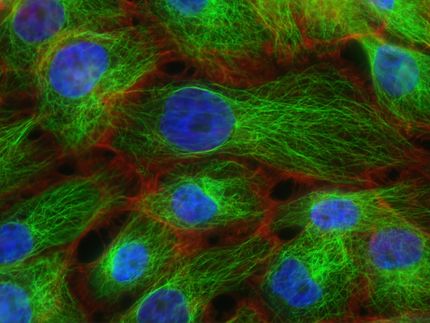Study identifying cell of origin for large, disfiguring nerve tumors lays groundwork for development of new therapies
UT Southwestern Medical Center researchers have determined the specific type of cell that gives rise to large, disfiguring tumors called plexiform neurofibromas, a finding that could lead to new therapies for preventing growth of these tumors.
“This advance provides new insight into the steps that lead to tumor development and suggests ways to develop therapies to prevent neurofibroma formation where none exist today,” said Dr. Lu Le, Assistant Professor of Dermatology at UT Southwestern and senior author of the study, published in Cancer Cell.
Plexiform neurofibromas, which are complex tumors that form around nerves, occur in patients with a genetic disorder called neurofibromatosis type 1 (NF1), which affects 1 in 3,500 people. About 30 percent of NF1 patients develop this type of tumor, which is typically benign.
NF1 patients with plexiform neurofibromas, however, have a 10 percent lifetime risk of the tumors developing into malignant peripheral nerve sheath tumors (MPNSTs), a deadly, incurable type of soft-tissue cancer. In addition, due to their unusual capacity for growth, plexiform neurofibromas can be life-threatening by their physical impairment of vital organs or neural function.
While there are no currently approved therapies for either MPNSTs or plexiform neurofibromas, Dr. Le said determining the cell type and location from which these tumors originate is an important step toward discovering new drugs that inhibit tumor development.
“If we can isolate and grow the cells of origin for neurofibromas, then we can reconstruct the biological steps that lead these original cells to tumor stage,” said Dr. Le, a member of the Harold C. Simmons Cancer Center. “Once we know the critical steps in the process, then we can design inhibitors to block each step in an effort to prevent or slow tumor formation.”
Using a process called genetic labeling for cell fate tracing, researchers determined that plexiform neurofibromas originate from Schwann cell precursors in embryonic nerve roots.
“This study addresses a fundamental question in the neurofibromatosis field,” Dr. Le said. “It points to the importance of stem cells and their immediate progenitors in the initiation of tumors, consistent with the notion that these neoplasms originate in a subset of primitive precursors and that most cells in an organ do not generate tumors.”
Most read news
Organizations
Other news from the department science

Get the life science industry in your inbox
By submitting this form you agree that LUMITOS AG will send you the newsletter(s) selected above by email. Your data will not be passed on to third parties. Your data will be stored and processed in accordance with our data protection regulations. LUMITOS may contact you by email for the purpose of advertising or market and opinion surveys. You can revoke your consent at any time without giving reasons to LUMITOS AG, Ernst-Augustin-Str. 2, 12489 Berlin, Germany or by e-mail at revoke@lumitos.com with effect for the future. In addition, each email contains a link to unsubscribe from the corresponding newsletter.


















































